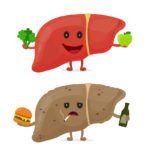By David Blyweiss, M.D., Advanced Natural Wellness
November 30, 2016
- You’re never too young to protect your bones against breaks and fractures
- Why calcium alone isn’t enough
- Here’s my secret formula to prevent fractures
When I talk to younger and middle-aged patients about shoring up their bone density, they often look at me with confusion. “But doc, I’m only 52. I don’t have to worry about that for years!”
What most folks don’t realize is that your bones reach maximum strength and density around age 30. After that, bone mass gradually starts breaking down.
You won’t notice it at first. You’ll still feel strong and be able to do the same things you’ve always done… right up until the minute you experience a break or fracture!
In the best case scenario you’ll suffer a minor fracture of your wrist or elbow. It’s painful and takes time to recover, but it will heal with time.
In the worst case, you’ll break a hip or develop compression fractures in your vertebra. Depending on the damage, either of these can require a hospital stay and several weeks at a rehab facility.
The problem is, these types of breaks and fractures don’t discriminate by age or gender.
Open your arteries, improve blood flow for a new health miracle...
Did you know your circulatory system has over 60,000 miles of arteries, veins and other blood vessels, if stretched end to end?
But as you age, your blood vessels undergo changes, which may cause them to stiffen, thicken and get clogged.
GOOD NEWS! Doctors have now identified a “Miracle Molecule” inside your arteries that helps OPEN your arteries and IMPROVE blood flow.
It’s what Dr. Valentin Fuster calls it, "One of the most important discoveries in the history of cardiovascular medicine."To you, that means...
- Healthy blood pressure
- Sharper mind and memory
- Skyrocketing energy and muscular strength
- Increased pleasure and passion in the bedroom
- Improved circulation to every cell and organ in your body
Go here to discover a new natural way to significantly boost the levels of this miracle molecule in YOUR body NOW!
So if you think you’re too young to think about your bone health, think again. And if you assume you’re excluded because your male, your assumption is incorrect. At last count, about 18 million men in the U.S. have low bone mass or osteoporosis.
It’s Never too Early to Start Protecting Your Bones
One of the best ways to determine the health of your bones right now is to have a bone density test. I recommend taking one if you’re losing height, have already experienced a break or fracture, or if you’re 60 or older.
If it shows you have low bone density, your doctor will probably suggest a biphosphonate drug like Fosomax, Boniva and Actonel. I suggest you steer clear of these drugs. They can cause spontaneous fractures of the femur – even if you aren’t doing anything to cause the fracture to occur! (Keep reading to learn about more successful alternatives.)
But even if your bone density is fine right now, this test won’t show you if you if there are weaknesses in your bone support system that could increase your chances of a fracture or break in the near future.
That’s why I recommend four specific tests that can help determine risk factors to your bone health. You should get them, regardless of your age, so that you can start correcting any weaknesses immediately.
4 Must-Have Tests to Avoid Bone Fractures
Calcium is something almost everyone equates to bone health. And it’s true. Your bones need plenty of calcium to stay strong and flexible. However, calcium isn’t the “be-all-do- all” that most people think it is. It requires the help of several other nutrients to do its job correctly.
With this in mind, I recommend you have your levels of these four nutrients tested:
The World's Quickest Solution for Ending Prostate and Urinary Misery
This has recently been revealed to be one of the only real breakthroughs in prostate health.
The seeds of a strange fruit (sometimes called "Chinese Apples") hold powerful phytonutrients that are a revolution in prostate health.
In fact, UCLA and Veterans Administration research have now proved this to be true.
Not only that, but it may be the worlds quickest solution for ending prostate misery.
Simply stated, these phytonutrients represent a huge step beyond beta sitosterol, saw palmetto, and other phytosterols alone.
Simply click HERE if you want to have fast prostate relief...restful, uninterrupted sleep...no more constant "urges to go"...enhanced virility...and optimal prostate support for life.
Calcium. There’s a good chance your doctor already includes calcium testing in your standard blood panels. If not, ask him or her to include it on your next visit.
If you’re levels are low take 1,000 mg. of calcium citrate daily in divided doses.
Foods high in calcium: Broccoli, kale, turnip greens, canned sardines and salmon.
Vitamin D3. Vitamin D3 is necessary for your bones to absorb calcium. If your levels are low, you’re more likely to experience bone loss, fractures, demineralization and osteoporosis.
If you are vitamin D3 deficient, take 5,000 IU of D3 in the cholecalciferol form each day. Otherwise, take 1,000 to 2,000 IU to maintain healthy levels. In just four months, supplementing with vitamin D3 can cut your risk of a first time fracture of the hip, wrist, forearm or vertebra by about a third.
Foods high in vitamin D: With the exception of cod liver oil, most foods contain negligible amounts of vitamin D.
Magnesium levels. About 60% of magnesium in your body is found in your bones, where it increases the activity of bone-forming cells. It also helps convert vitamin D to its active form. This, in turn, boosts calcium absorption.
If your levels are below normal, supplement with 5 mg of magnesium per pound of body weight in two divided doses each day to boost bone mineralization and support cells involved in bone formation and resorption. Use magnesium citrate if your bowel movements are one a day or less and the glycinate, threonate, oxide or aspartate forms otherwise.
Foods high in magnesium: Carrots, peas, broccoli, asparagus, sunflower seeds and almonds.
Vitamin K2 helps calcium bind to your bones by producing a hormone called osteocalcin, which indicates a higher turnover of old and new bone.
If your levels are lower than they should be, supplement with 45 to 100 mcg. of K2 (menaquinone) each day to cut down on bone loss and improve mineral density. The best Vitamin D3 supplements already have vitamin K2 in them.
Foods high in K2: Natto, made from steamed and fermented soybeans, is probably the richest source. It’s also abundant in organ meats.
It’s also very important to add weight-bearing exercises to your daily regimen. Walking, biking, jogging… squats, pushups and lunges… whatever you can manage.
These exercises work on your bones much the same way as they do your muscles – making them stronger and more able to support your body for every day activities.
SOURCES:
Ing Lorenzinit K, et al. Atypical femoral fracture associated with the use of bisphosphonates, an adverse drug reaction not to be missed. Rev Med Suisse. 2012 Jun 6;8(344):1238-42.
Trivedi DP, et al. Effect of four monthly oral vitamin D3 (cholecalciferol) supplementation on fractures and mortality in men and women living in the community: randomised double blind controlled trial. BMJ. 2003 Mar 1;326(7387):469.
Lips P, et al. The effect of vitamin D on bone and osteoporosis. Best Pract Res Clin Endocrinol Metab. 2011 Aug;25(4):585-91.
Castiglioni S, et al. Magnesium and Osteoporosis: Current State of Knowledge and ture Research Directions. Nutrients. 2013 Aug; 5(8): 3022–3033.
Knapen MH, et al. Three-year low-dose menaquinone-7 supplementation helps decrease bone loss in healthy postmenopausal women. Osteoporos Int. 2013 Sep;24(9):2499-507.
Plaza SM, et al. Vitamin K2 in bone metabolism and osteoporosis. Altern Med Rev. 2005 Mar;10(1):24-35.








I had no idea that maintaining proper magnesium levels in your body can help maximize spinal health. I have a friend who unfortunately had a spinal compression fracture and I wonder if the proper intake of these vitamins and nutrients you’ve described would be helpful for their recovery. Thanks for the tips, I’ll be sure to pass them along to anyone interested in their spinal health.
Thank you, Baxter.